The state of Louisiana is located in the Southeast Region of the United States and has an identity that is very much its own. Known for its local Cajun culture and cuisine, thriving music scene, and world-renowned Mardi Gras festival, the state’s French and Spanish heritage is evident everywhere you look.
Louisiana (LA) on the US Map
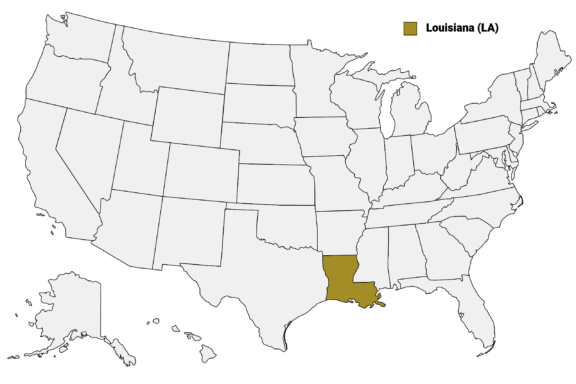
In addition to its unique cultural makeup, Louisiana also has some administrative qualities that set it apart from the rest of the country. It is the only state in the USA with a legal system based on civil law instead of common law, something it owes to its colonial past as a part of Spain and France.
Louisiana is also one of only two states in the country that do not have counties. Instead, Louisiana is divided into 64 parishes, another legacy of its colonial past. The other state without counties is Alaska, which is divided into boroughs.
The parishes of Louisiana function much like counties in other states and help with the administration of the local government.
In this post, we’ll look at a Louisiana Parishes Map alongside detailed information about each parish. We’ll also take a closer look at some of the state’s more notable parishes.
Map of Louisiana Parishes (Counties)
Below is a map of the 64 parishes of Louisiana (you can click on the map to enlarge it and to see the major city in each parish).
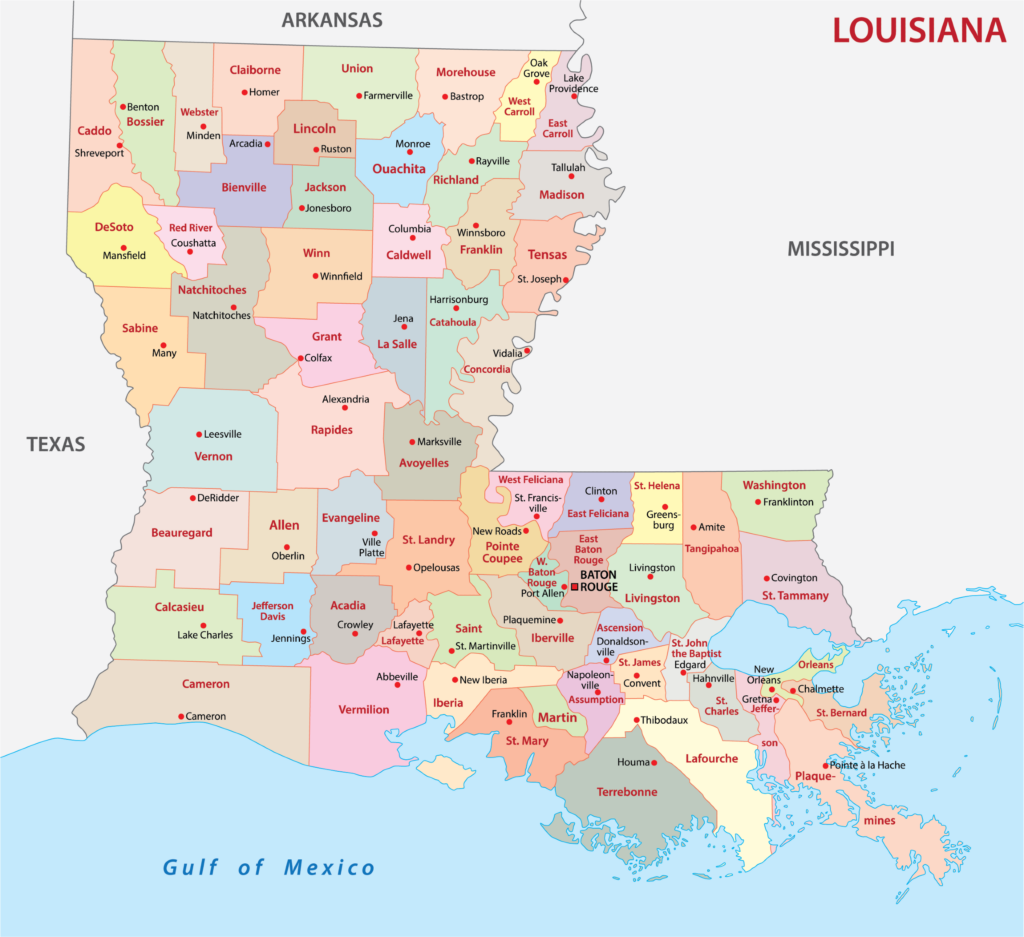
Interactive Map of Louisiana Parishes
Click on any of the counties on the map to see the parishes population, economic data, time zone, and zip code (the data will appear below the map). Data is sourced from the US Census 2021.
List of the Parishes* of Louisiana:
*Louisiana has parishes instead of counties because of its French and Spanish colonial history.
| County | Population | Per sq. km | Largest City |
|---|---|---|---|
| Acadia Parish | 58,200 | 34.29 | Crowley |
| Allen Parish | 23,085 | 11.7 | Oakdale |
| Ascension Parish | 125,289 | 166.83 | Prairieville |
| Assumption Parish | 21,366 | 23.98 | Belle Rose |
| Avoyelles Parish | 39,880 | 18.51 | Marksville |
| Beauregard Parish | 36,417 | 12.15 | DeRidder |
| Bienville Parish | 13,130 | 6.25 | Arcadia |
| Bossier Parish | 128,508 | 59.1 | Shreveport |
| Caddo Parish | 239,775 | 105.27 | Shreveport |
| Calcasieu Parish | 212,646 | 77.16 | Lake Charles |
| Caldwell Parish | 9,707 | 7.07 | Banks Springs |
| Cameron Parish | 5,650 | 1.7 | Hackberry |
| Catahoula Parish | 9,117 | 4.97 | Jonesville |
| Claiborne Parish | 14,456 | 7.39 | Homer |
| Concordia Parish | 18,989 | 10.52 | Vidalia |
| De Soto Parish | 26,803 | 11.81 | Mansfield |
| East Baton Rouge Parish | 455,447 | 386.06 | Baton Rouge |
| East Carroll Parish | 7,502 | 6.88 | Lake Providence |
| East Feliciana Parish | 19,588 | 16.68 | Jackson |
| Evangeline Parish | 32,538 | 18.96 | Ville Platte |
| Franklin Parish | 19,964 | 12.35 | Winnsboro |
| Grant Parish | 22,236 | 13.35 | Colfax |
| Iberia Parish | 70,518 | 47.46 | New Iberia |
| Iberville Parish | 30,651 | 19.13 | St. Gabriel |
| Jackson Parish | 15,214 | 10.32 | Jonesboro |
| Jefferson Davis Parish | 32,270 | 19.12 | Jennings |
| Jefferson Parish | 439,402 | 563.73 | Metairie |
| Lafayette Parish | 241,173 | 346.38 | Lafayette |
| Lafourche Parish | 97,677 | 35.32 | Thibodaux |
| LaSalle Parish | 14,770 | 9.13 | Jena |
| Lincoln Parish | 48,415 | 39.63 | Ruston |
| Livingston Parish | 141,057 | 84.03 | Denham Springs |
| Madison Parish | 10,297 | 6.37 | Tallulah |
| Morehouse Parish | 25,852 | 12.56 | Bastrop |
| Natchitoches Parish | 37,896 | 11.67 | Natchitoches |
| Orleans Parish | 383,974 | 874.65 | New Orleans |
| Ouachita Parish | 160,227 | 101.36 | Monroe |
| Plaquemines Parish | 23,536 | 11.65 | Belle Chasse |
| Pointe Coupee Parish | 20,951 | 14.53 | New Roads |
| Rapides Parish | 130,459 | 38.14 | Alexandria |
| Red River Parish | 7,787 | 7.73 | Coushatta |
| Richland Parish | 20,110 | 13.97 | Rayville |
| Sabine Parish | 22,377 | 9.97 | Many |
| St. Bernard Parish | 43,821 | 44.82 | Chalmette |
| St. Charles Parish | 52,411 | 72.86 | Luling |
| St. Helena Parish | 10,881 | 10.28 | Greensburg |
| St. James Parish | 20,390 | 33.1 | South Vacherie |
| St. John the Baptist Parish | 42,704 | 76.88 | Laplace |
| St. Landry Parish | 82,999 | 34.68 | Opelousas |
| St. Martin Parish | 52,222 | 27.34 | Broussard |
| St. Mary Parish | 49,818 | 34.6 | Morgan City |
| St. Tammany Parish | 262,799 | 120.04 | Mandeville |
| Tangipahoa Parish | 132,492 | 64.66 | Hammond |
| Tensas Parish | 4,269 | 2.73 | Newellton |
| Terrebonne Parish | 110,100 | 34.56 | Houma |
| Union Parish | 21,272 | 9.37 | Farmerville |
| Vermilion Parish | 57,775 | 19.01 | Abbeville |
| Vernon Parish | 49,064 | 14.28 | DeRidder |
| Washington Parish | 45,794 | 26.4 | Bogalusa |
| Webster Parish | 37,356 | 24.31 | Minden |
| West Baton Rouge Parish | 27,064 | 54.33 | Addis |
| West Carroll Parish | 9,959 | 10.69 | Oak Grove |
| West Feliciana Parish | 15,334 | 14.68 | St. Francisville |
| Winn Parish | 13,875 | 5.64 | Winnfield |
The Largest Louisiana Parishes by Population
East Baton Rouge Parish
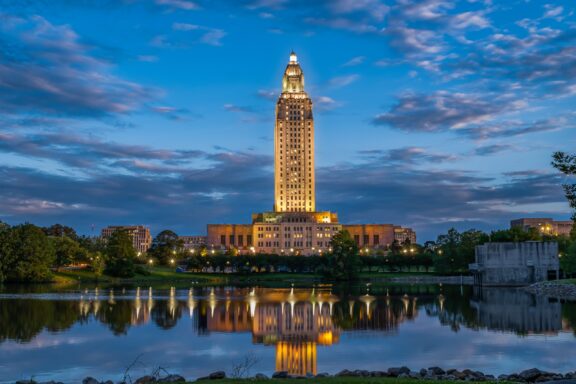
East Baton Rouge Parish stands as the most populous parish in Louisiana, acting as a crucial hub for state politics, education, and culture. With a population exceeding 450,000, the parish seat is also Louisiana’s capital city, Baton Rouge. It is an important center for government and legislative operations, hosting the Louisiana State Capitol and the Governor’s Mansion.
Education forms a cornerstone of the parish’s identity, anchored by Louisiana State University (LSU). LSU, a major research university, draws students from across the globe, contributing significantly to the parish’s cultural diversity and intellectual vibrancy.
Culturally, East Baton Rouge Parish boasts landmarks like the Old State Capitol, now a museum, and the Shaw Center for the Arts, reflecting its rich historical tapestry. The parish’s economy is equally diverse, spanning petrochemical, medical, research, and technology sectors.
This mix of government, education, culture, and industry makes East Baton Rouge Parish not only a dynamic locality within Louisiana but also a key player in the broader regional landscape.
Jefferson Parish
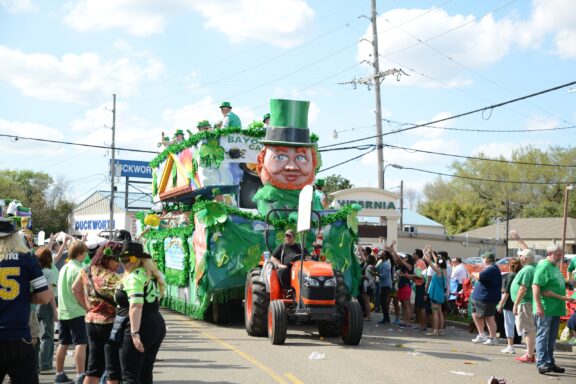
Jefferson Parish is located in the eastern part of the state next to the similarly populous Orleans and St. Tammany parishes. As the second-most populous parish in Louisiana, Jefferson Parish comprises a mix of cultures, which are represented in its cuisine, festivals, and community events. It was created in 1825, and Gretna is the parish seat.
At the heart of Jefferson Parish, there’s also a strong community focus, evident in family-friendly parks, recreational facilities, and a network of public libraries. Its proximity to New Orleans allows residents and visitors to enjoy a quieter lifestyle while still having easy access to the vibrant music, arts, and nightlife of the city.
Jefferson Parish also stands out for its educational initiatives, boasting a range of public and private schools, as well as higher education institutions. This commitment to education fosters a knowledgeable and skilled community, essential for the parish’s diverse economic base, which includes healthcare, retail, and manufacturing sectors.
Orleans Parish
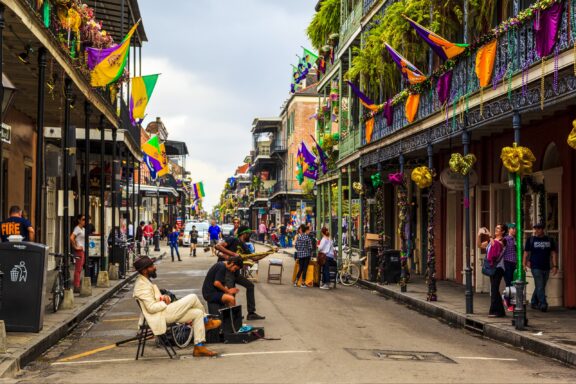
The Orleans Parish in Louisiana is one of four consolidated city-parishes in the state, meaning the parish is coterminous with the city of New Orleans. New Orleans is the most populous city in Louisiana, and it is the third-largest parish in the state. Founded over 300 years ago, this parish gets its name from the Duke of Orleans, the regent of France.
New Orleans is likely the most famous city in Louisiana, known for its unique music culture, Creole cuisine, and Mardi Gras festival. Its diverse neighborhoods such as the historic French Quarter and the artsy Bywater each have their own history and culture, creating an eclectic atmosphere.
With plenty of things to see and do, New Orleans is a major tourist destination, which helps to support its economy. The parish is also a center for maritime commerce and industry, benefiting from its strategic location along the Mississippi River. The city is also home to the Port of New Orleans, which offers a variety of maritime services including cargo and cruises.
Additionally, institutions like Tulane University and the University of New Orleans contribute to a thriving academic atmosphere. The parish’s commitment to the arts is evident in its numerous galleries, theaters, and museums, making it a haven for artists and creatives.
St. Tammany Parish
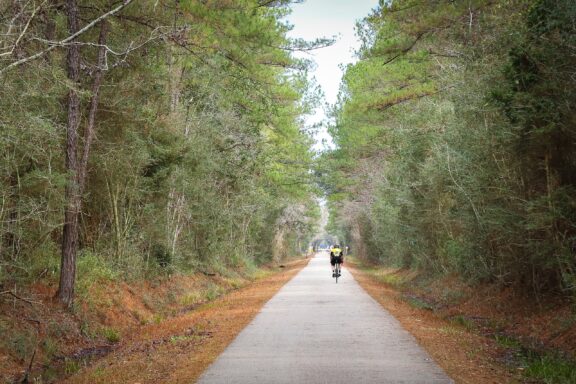
Louisiana’s St. Tammany Parish in Louisiana, established in 1810, is named after the revered Delaware Indian Chief Tamanend. Situated on the picturesque north shore of Lake Pontchartrain, the parish has evolved from its agricultural roots to a vibrant suburban community.
The history of St. Tammany Parish has been shaped by original inhabitants such as the Choctaw, Tchefuncte, Acolapissa, and Houma tribes, as well as French and Spanish settlers. This diverse heritage is reflected in the parish’s architecture, traditions, and community ethos.
One significant event in the history of the parish was its role during the War of 1812, notably in the Battle of Lake Borgne. Today, St. Tammany Parish is renowned for its scenic beauty, encapsulated in attractions like the Tammany Trace trail and its lush forests and waterways. It offers a high quality of life with its top-rated schools, economic diversity, and strong community ties.
With a population of over 260,000, the parish’s economy benefits from sectors such as healthcare, education, and tourism. The parish’s commitment to preserving its natural and historical heritage, alongside fostering modern development, makes St. Tammany Parish a unique and appealing destination in Louisiana.
Lafayette Parish
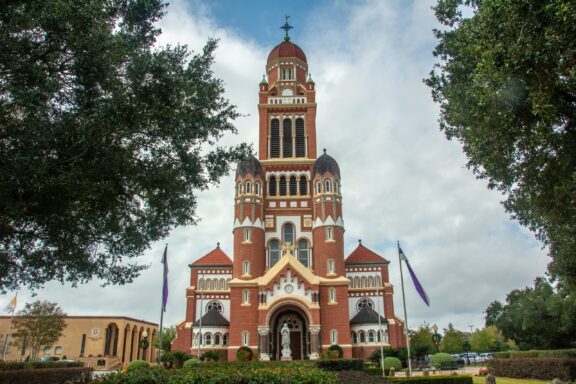
Lafayette Parish was originally established in 1823 and has operated with the city of Lafayette as a consolidated government since 1996. The parish was named in honor of Marquis de la Fayette, a French hero of the American Revolutionary War. The consolidated city-parish is a center of Acadian culture, reflecting a rich blend of French, African, Spanish, and Native American influences.
Lafayette’s history is deeply intertwined with the Acadian people, descendants of French Canadians, who settled here in the 18th century. On display at the city’s Acadian Cultural Center, this historical background is palpable in Lafayette’s architecture, festivals, and community life.
Celebrated for its spicy Cajun and Creole cuisine, lively Zydeco music, and colorful festivals like the Festival International de Louisiane, the parish is a hub for cultural expression and preservation.
Economically, Lafayette Parish has developed a diverse base, with strong sectors in healthcare, education, retail, and oil and gas. The University of Louisiana at Lafayette contributes to the parish’s dynamic atmosphere, fostering education and innovation.
The Smallest Louisiana Counties by Population
Tensas Parish
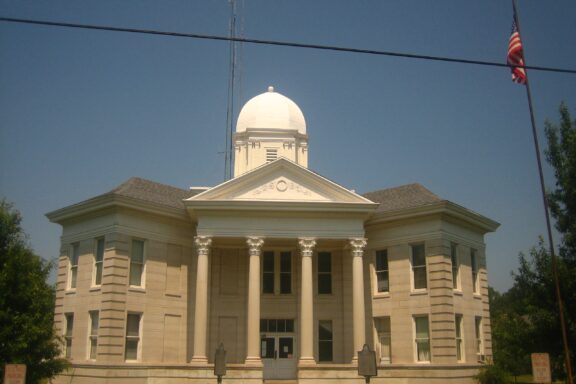
Tensas Parish, located in northeastern Louisiana, stands out for its rich history and rural charm. Established in 1843, the parish is named after the Native American Tensas tribe. With a population of just over 4,000, it is the least populous parish in the state.
The parish’s history is marked by its agricultural heritage, primarily focused on cotton farming in the 19th and early 20th centuries. This agricultural past has deeply influenced the local culture and economy, with remnants of old plantations and historic structures dotting the landscape.
Today, Tensas Parish is a blend of past and present. Its economy has gradually diversified, though agriculture remains a key component. The parish is known for its natural beauty, including the Tensas River National Wildlife Refuge, which attracts nature enthusiasts for bird watching, hunting, and fishing.
Cameron Parish
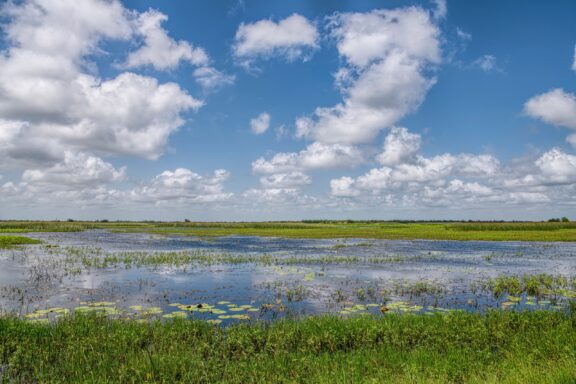
Cameron Parish, located in the southwestern corner of Louisiana, is known for its vast wetlands, abundant wildlife, and a strong sense of community. Established in 1870 and named after Senator Simon Cameron, the parish is the second-least populous in the state and the largest in total area.
The history of Cameron Parish is deeply connected to the Gulf of Mexico and its resources. It has long been a center for the shrimping and fishing industries, with generations of families building their lives around these trades. The parish’s culture reflects this maritime heritage, evident in local customs, cuisine, and festivals.
Cameron Parish has also faced challenges, particularly from hurricanes and coastal erosion. These events have shaped the resilience and adaptability of its communities. Today, the parish’s economy is a mix of energy, fishing, and tourism, with an increasing focus on coastal restoration and preservation.
The Cameron Prairie National Wildlife Refuge exemplifies the parish’s commitment to its natural environment.
East Carroll Parish
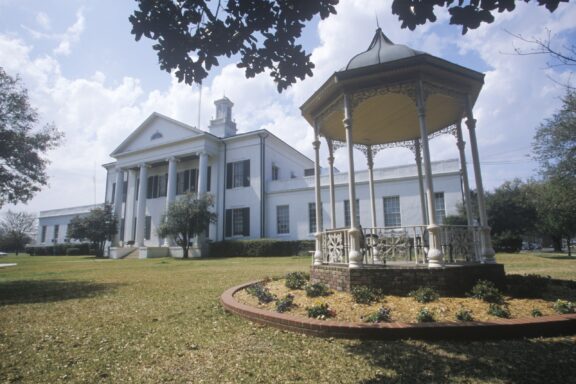
East Carroll Parish, situated in the northeastern corner of Louisiana along the Mississippi River, is steeped in history and agricultural tradition. Established in 1877, it was named for Charles Carroll of Carrollton, the last surviving signer of the Declaration of Independence. With a population of around 7,500, it is among the smallest parishes in the state.
The parish’s history is closely tied to the Mississippi River, which has played a pivotal role in its development, particularly in the realm of agriculture. East Carroll Parish has a strong agricultural base, historically centered on cotton farming. This agricultural legacy has left a lasting impact on the parish’s culture and economy.
Despite its small size, East Carroll Parish has a rich cultural tapestry, with a community that values its history and traditions. The Louisiana Soul Food and Heritage Festival held in Lake Providence, the parish seat, is a celebration of the local culture through music, arts, and food.
Notable Louisiana Parishes
Caddo Parish
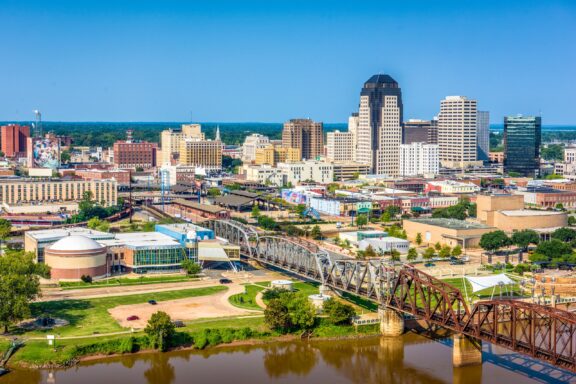
Caddo Parish, located in the northwest corner of Louisiana, is notable for its rich cultural heritage and for its parish seat of Shreveport, the third-largest city in the state. Established in 1838, it was named after the Caddo Native American tribe that once inhabited the area. Shreveport serves as a commercial and cultural hub in the region.
Caddo Parish’s historical significance is deeply rooted in its oil industry. The discovery of oil in the early 20th century transformed the parish’s economy and spurred rapid growth and development. This oil boom left a lasting impact on the parish’s landscape, economy, and culture. Shreveport experienced a surge in wealth and population during this period, which contributed to its development as a major urban center.
Today, Caddo Parish is known for its diverse economy, which encompasses sectors like healthcare, education, and manufacturing, alongside the enduring oil industry. The parish boasts a rich cultural scene, with institutions such as the R.W. Norton Art Gallery and the Shreveport Symphony Orchestra.
St. Bernard Parish
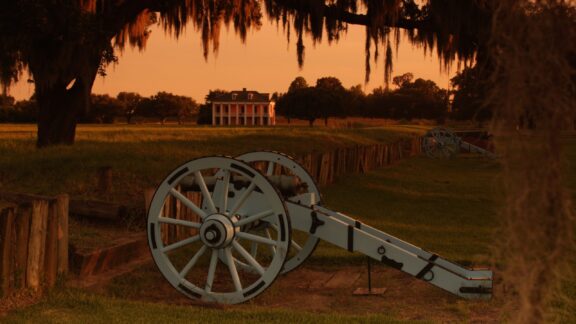
St. Bernard Parish, situated to the southeast of New Orleans, is a parish with a unique cultural identity and historical significance in Louisiana. Established in 1807, it is one of the state’s oldest parishes and was named for the patron saint of the Spanish colonial governor Bernardo de Gálvez.
St. Bernard Parish played a crucial role in American history, particularly during the War of 1812. It was the site of the Battle of New Orleans, a significant event where American forces under General Andrew Jackson defeated the British. This battle is commemorated at the Chalmette Battlefield, a key historical attraction in the parish.
In more recent times, St. Bernard Parish gained attention for its resilience and recovery following Hurricane Katrina in 2005. The parish was one of the hardest-hit areas, but it has since undergone significant rebuilding and revitalization efforts. Today, it is known for its strong sense of community, local festivals, and as a center for commercial fishing and seafood processing.
More About Louisiana Parishes: FAQs
What’s the difference between a parish and a county?
The term “parish” is used instead of “county” in Louisiana because of its French and Spanish colonial history. The functions of a parish in Louisiana are similar to those of counties in other states.
Which parish is the center of the Acadian region in Louisiana?
Lafayette Parish is considered the heart of the Acadiana region, known for its Cajun and Creole cultures.
Which Louisiana parish is the birthplace of jazz music?
Orleans Parish, specifically New Orleans, is widely recognized as the birthplace of jazz.
Which Louisiana parish has the highest elevation?
The highest elevation in Louisiana is just 535 feet above sea level, located atop Driskill Mountain in Bienville Parish.
Image Sources and Copyright Information
- Twilight Reflections of a Historic Building by the Waterfront: © Sharon Ball/Shutterstock
- St. Patrick’s Day Parade with Colorful Float and Revelers in Metairie, Louisiana: © Suzanne C. Grim/Shutterstock
- Mardi Gras Celebration Atmosphere in the French Quarter, New Orleans: © GTS Productions/Shutterstock
- Bicyclist on a Scenic Trail Through a Lush Green Forest: © Wirestock Creators/Shutterstock
- Historic Dutch Romanesque Revival Style Cathedral in Lafayette Parish: © Nina Alizada/Shutterstock
- Classical Revival Style Courthouse Building with Dome and American Flag: © Billy Hathorn/Wikimedia Commons | CC BY-SA 3.0 Unported
- Serene Wetlands and Fluffy Clouds in Cameron Parish, Coastal Louisiana: © Bonnie Taylor Barry/Shutterstock
- Classic Gazebo in Front of a Courthouse on a Sunny Day: © Joseph Sohm/Shutterstock
- Downtown Skyline of Shreveport, Louisiana Overlooking the Red River: © Sean Pavone/Shutterstock
- Sunset at a Historic Southern Plantation with Civil War Cannon in Foreground: © Elliott Cowand Jr/Shutterstock